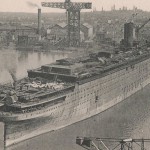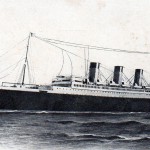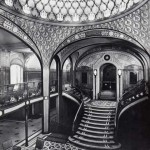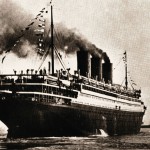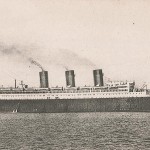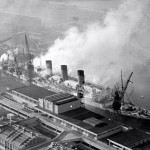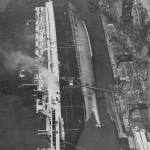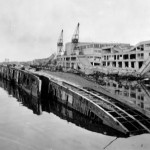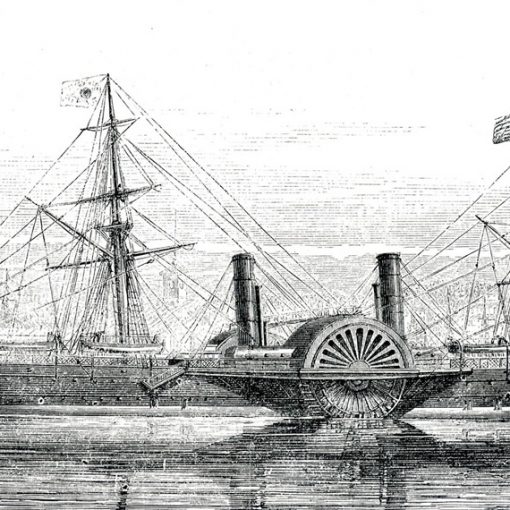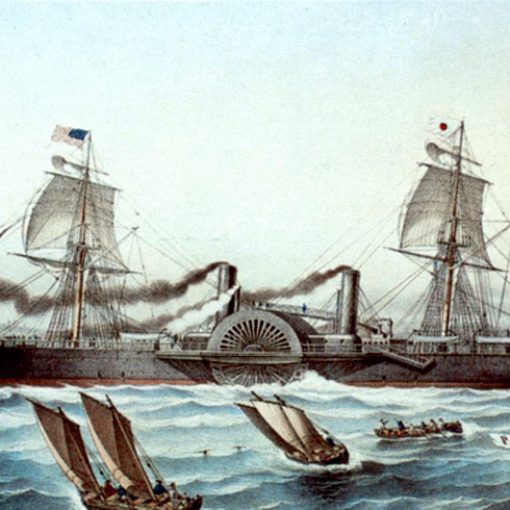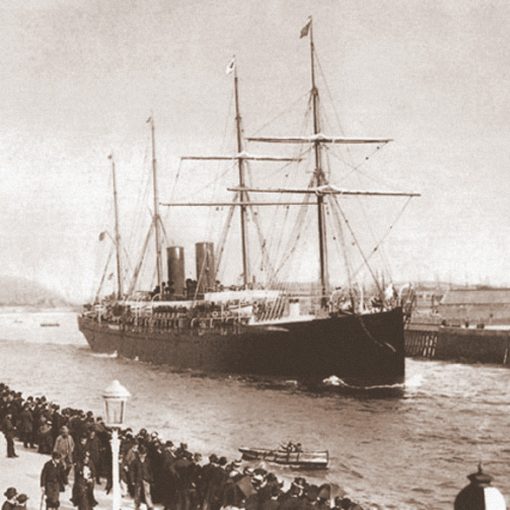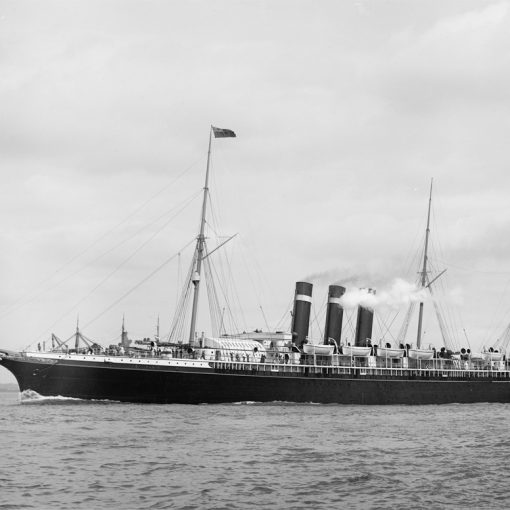1921 – 1947
By putting the 23,000-tonner France into service in 1912, it was proved to the world that the French Line had become a very distinguished shipping company. The French had decided not to interfere in the struggle for the Blue Riband, but instead aim for luxury and comfort. The France featured fabulous interiors, inspired by the French 17th century king Louis XIV’s marvellous palace in Versailles. Even though the France was a fast ship at 23 knots, it was clear for the passenger what it was to be most thrilled about.
The French Line decided to continue the success of the France by commissioning yet another liner shortly after the arrival of the France. This time the aim would be even further evident. The new liner would be close to 35,000 tons, and have a service speed around 22 knots, which was not too exciting in the early 1920s. The thing that would attract passengers was the ship’s interiors, just as the France.
In 1913, the vessel was laid down in Penhoët. However, construction would not continue for long – as soon as World War I broke out in 1914, the construction of the ship was halted. The ship – that by now was decided to be named Paris – lay idle on the slipway during the first years of the war. The French government soon realised, however, that the country would need every space possible in order to construct new war-ships. On September 12, 1916, the Paris was hurriedly launched to make place for other more devastating vessels. She was placed in Quiberon Bay, but no work was resumed.
The sinking of the Lusitania in 1915 had contributed to America entering the war in 1917. This helped the war towards an end, and in 1918 the Germans was forced to surrender and sign the treaty of Versailles. When the war had ended, every participating country had to start over from 1914. In France, work on the Paris was finally resumed in 1919. Two years later, on June 5, 1921, the Paris was completed. She emerged from the shipyard as the largest vessel ever built in France. Now that the ship was completely fitted, the press could catch an eye on what the French Line had meant in 1913, when they talked about the Paris’ interiors. The ship had something of a magic touch, with every possible kind of interiors. You could choose to travel in the standard conservative palace-like cabins, but the ship also featured Art Nouveau and hints of the Art Deco that the Ile de France would boast six years later. The luxury of the ship was something no other liner could claim to have. For starters, most first class staterooms had square windows rather than the usual round portholes. In your cabin you were able to have a private telephone, which was extremely rare on board a ship. Your valet could on the Paris be easy to call for in his adjacent room, rather than in a cabin in the second class, uncomfortably far away. Added to this the Paris, along with the other French liners, was known for her superb food.
The Paris had originally, as all pre-war liners, been designed with the emigrating Europeans in mind. But as America restricted its immigration laws after the war, the Paris had to aim even more at the rich and famous passengers. Anyway, the 1920s turned out to be a profitable period for the French liners. Not until the very end of the decade did something serious happen to the Paris.
In April, 1929, the Paris had ran aground on the Brooklyn shore, but that did not damage the ship as bad as the fire that broke out on board the ship when she was at Le Havre four months later. The ship’s passenger areas were completely devastated by the blaze’s smoke, and by the great amount of water sprayed by the fire brigade. It took almost half a year to repair the Paris. When she returned she had had her passenger accommodation changed from 2,132 to 1,934. But this occurrence was merely a taste of what would follow…
In 1927, the Paris had been joined by the 43,000-tonner Île de France who featured even more artistic joy than her older ‘sister’. Eight years later, the French Line added the tremendous 79,000-tonner Normandie to their fleet. With this ship and the Île de France (who also had been outdated by the arrival of the Normandie) the Paris was left entirely behind in liner standard. Of course, she was still the third largest vessel in C.G.T. service, but the Normandie was such a novelty that everything else seemed old-fashioned. Even the Queen Mary, who entered service after the Normandie, seemed too conservative.
The fire on board the Paris in 1929 had destroyed much of the ship, but she was still too young for selling to the scrappers. Fires have always been common problems on board old ship and in 1939, the Paris suffered yet another raging blaze. On April 18, at 10.00 p.m., the ship’s bakery on the A-deck started to burn when at Le Havre harbour. The fire spread so fast that the attempts to move the liner out of the quay failed. The Paris was for the moment carrying art treasures destined for New York, which fortunately were all removed from the ship in time and transferred to the Champlain. Five hours after the fire had broke out, the promenade deck cabins were all set on fire for the entire ship’s length. Just as with the Normandie in 1942, the fire brigade pumped too much water on the ship, who became top heavy due to that the water could not penetrate the lower areas of the ship because of the ship’s closed watertight compartments. In the morning at 09.15, the ship heeled over onto her port side. The still intact funnels and masts trapped the immense Normandie who had been alongside the Paris during the event. The vessel had fallen so badly that righting her was impossible. It was clear that there was nothing to do in order to save the Paris. Two days later her funnels and masts were cut off to free the trapped Normandie.
A few months later, World War II began when Germany invaded Poland. The war meant yet another time of non-concern for inoperable liners. The Paris lay on her side in Le Havre for the entire war. A year after the war had ended, the German 50,000-ton war-prize Liberté (the ex-Europa), used the pier next to Paris’. In a storm she broke loose, and was holed by the wreck and – astonishingly – sank on the spot! However, the Liberté was salvaged; she had deliberately been sunk on an even keel before yet another disaster of Paris- or Normandie-scale occurred. The wreck of the Paris remained on the spot until 1947, when she finally was dismantled where she lay.
Specifications
- 764 feet (233.4 m) long
- 85 feet (26 m) wide
- 34,569 gross tons
- Steam turbines powering four propellers
- 22 knot service speed
- Passenger capacity of 2,132 people

